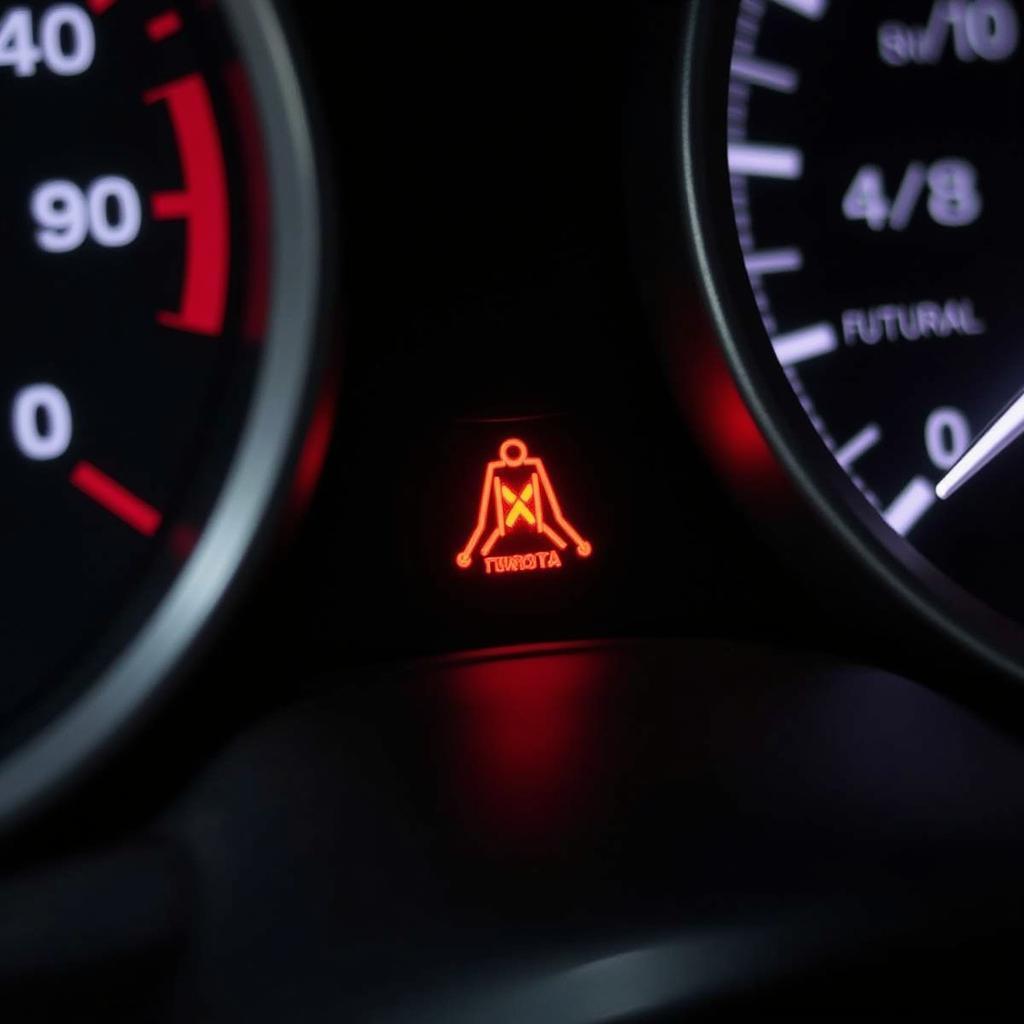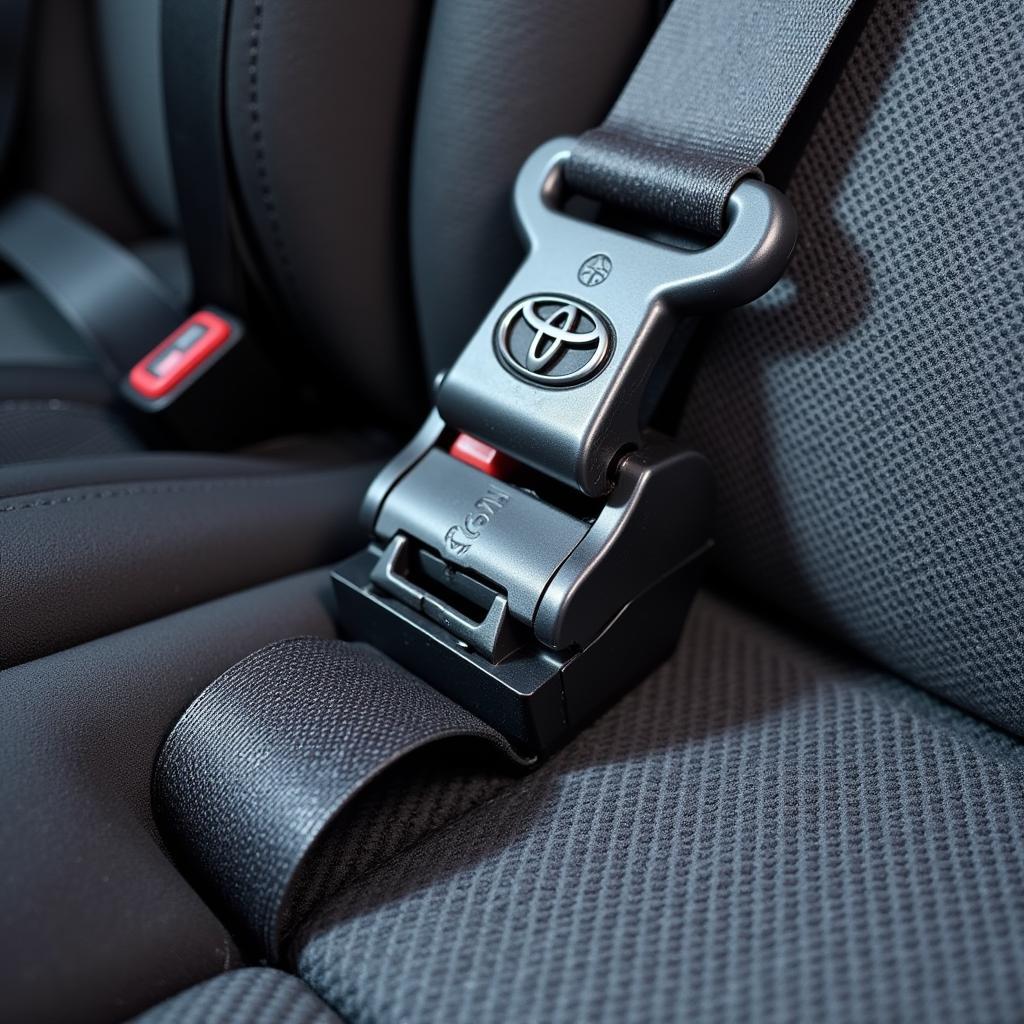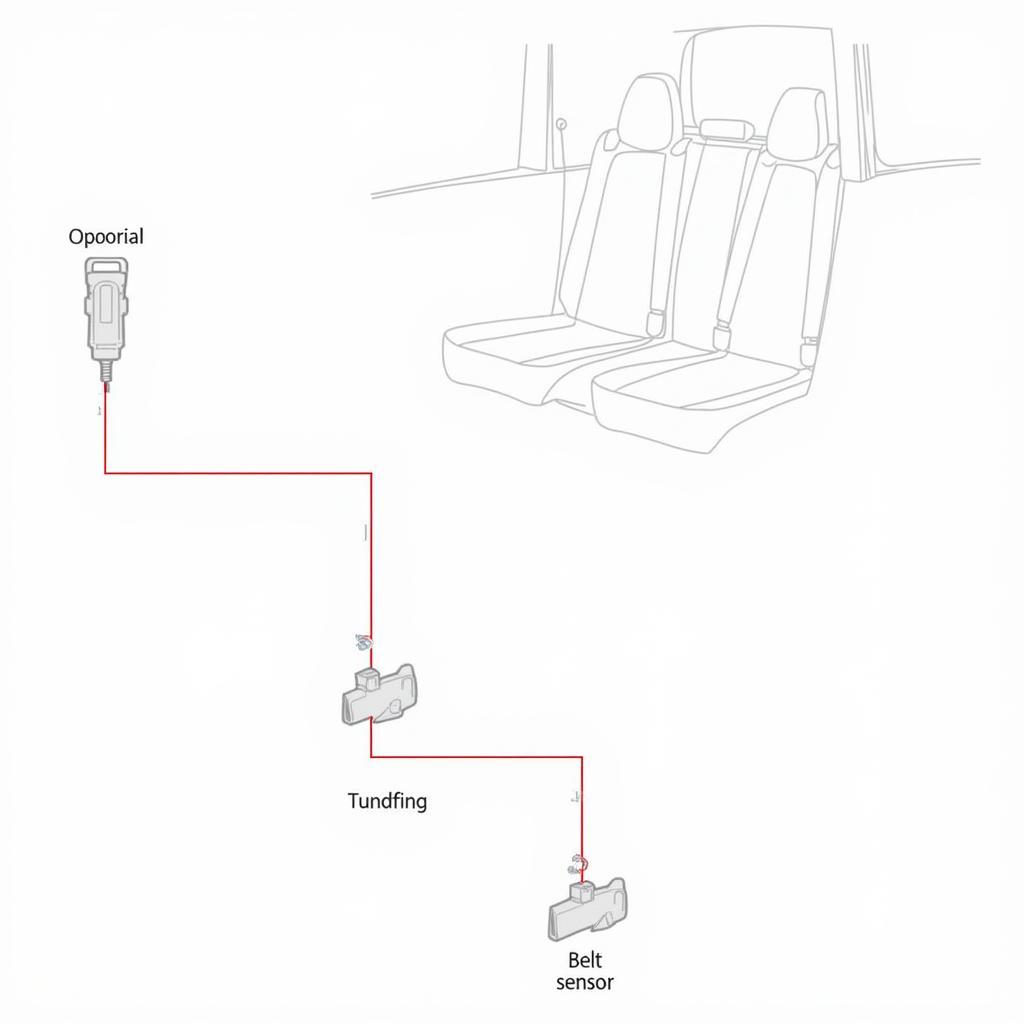The annoying toyota seat belt warning sound is a critical safety feature designed to remind drivers and passengers to buckle up. However, sometimes this chime can become a nuisance, especially if it malfunctions. This guide dives deep into the causes, solutions, and preventative measures related to the Toyota seat belt warning sound.
Having a properly functioning seat belt system is paramount for safety. A malfunctioning warning system might indicate a larger issue with the vehicle’s safety restraints. Understanding the warning system and troubleshooting it effectively can ensure your safety on the road. After understanding the basics, you can explore more complex issues like a Warn 8274 winch brake rebuild, if you have a winch installed.
 Toyota Seat Belt Warning Light Illuminated on Dashboard
Toyota Seat Belt Warning Light Illuminated on Dashboard
Understanding the Toyota Seat Belt Warning System
The seat belt warning system in Toyota vehicles is composed of several components: seat belt buckles, pretensioners, sensors, and the warning chime itself. When the ignition is turned on, the system checks if the seat belts are fastened. If not, the warning chime activates, and a warning light illuminates on the dashboard. This system is designed to be persistent, ensuring occupants buckle up. If you have a winch and its brake isn’t holding, you can find solutions similar to a warn winch brake not holding.
Common Causes of the Toyota Seat Belt Warning Sound
- Unbuckled Seat Belts: This is the most obvious reason. Even if the driver is buckled, unbuckled passenger seats can trigger the chime.
- Faulty Seat Belt Buckle: A damaged or worn-out buckle may not register as fastened, triggering the warning even when the seat belt is engaged.
- Seat Belt Sensor Issues: The sensors that detect whether the seat belt is fastened can malfunction due to wear and tear, debris, or electrical problems.
- Wiring Problems: Damaged or corroded wiring in the seat belt system can cause the warning chime to activate intermittently or continuously.
- Software Glitches: Occasionally, a software glitch within the vehicle’s computer system can cause the seat belt warning sound to malfunction.
 Close-up of a Damaged Toyota Seat Belt Buckle
Close-up of a Damaged Toyota Seat Belt Buckle
Troubleshooting the Toyota Seat Belt Warning Sound
Before taking your vehicle to a mechanic, you can try these troubleshooting steps:
- Check All Seat Belts: Ensure all seat belts are properly fastened, including the rear seats.
- Inspect the Buckles: Look for any visible damage or obstructions in the buckles. Try cleaning them with compressed air.
- Check the Wiring: If you are comfortable working with car electronics, carefully inspect the wiring connected to the seat belt buckles and sensors. Look for any loose connections, corrosion, or damage. Understanding the basics of wiring can be helpful in other car modifications too, like installing a warn rt25 brake plate on a winch.
- Reset the System: Sometimes, disconnecting the battery for a few minutes can reset the vehicle’s computer and resolve software glitches.
If you are mechanically inclined and working on winches, you might be interested in warn 8274 brake parts or the warn 8274 brake shaft roller bearing size.
 Wiring Diagram for a Toyota Seat Belt System
Wiring Diagram for a Toyota Seat Belt System
Professional Diagnostics and Software Solutions
If the troubleshooting steps don’t resolve the issue, it’s time to consult a professional. Modern vehicles rely heavily on software, and remote diagnostics and software updates can often address the problem efficiently. “Remote diagnostics and software updates offer a convenient and often quicker solution compared to traditional methods,” says automotive electrical engineer, Michael Davis.
Remote Diagnostics
Remote diagnostics allow technicians to access your vehicle’s computer system remotely to identify the root cause of the problem. This can save time and money by pinpointing the faulty component quickly.
Software Updates and Programming
Software updates can address bugs and improve the performance of various systems, including the seat belt warning system. “Regular software updates are crucial for maintaining the optimal performance and safety of your vehicle,” adds Davis.
Conclusion
The toyota seat belt warning sound is an essential safety feature, and addressing any malfunctions promptly is crucial. While simple troubleshooting steps can often resolve the issue, professional diagnostics and software solutions offer a more comprehensive approach. Ensuring your seat belt system is functioning correctly contributes significantly to your safety on the road.
FAQ
- Why is my Toyota seat belt warning sound constantly on? This could be due to an unbuckled seat belt, a faulty buckle, a sensor issue, or a wiring problem.
- Can I disable the Toyota seat belt warning sound? While some methods exist, it’s generally not recommended as it compromises safety.
- How much does it cost to fix a Toyota seat belt warning sound issue? The cost varies depending on the cause. Simple fixes might be inexpensive, while more complex issues requiring software updates could be more costly.
- Can remote diagnostics fix my Toyota seat belt warning sound? Yes, remote diagnostics can often pinpoint the problem and guide the repair process.
- How often should I have my Toyota’s software updated? Consult your owner’s manual or a Toyota dealership for recommended software update intervals.
- Is it safe to drive with a malfunctioning seat belt warning sound? While driving is possible, it’s not recommended. A malfunctioning warning system might indicate a larger problem with the safety restraints.
- Can I fix the seat belt warning sound myself? Simple troubleshooting steps can be performed at home, but more complex issues require professional assistance.
